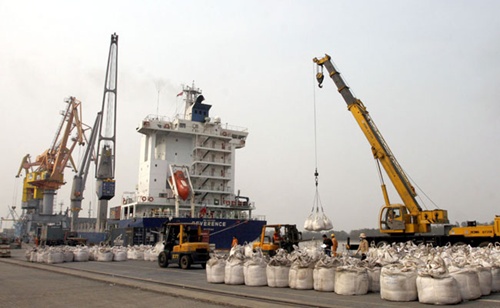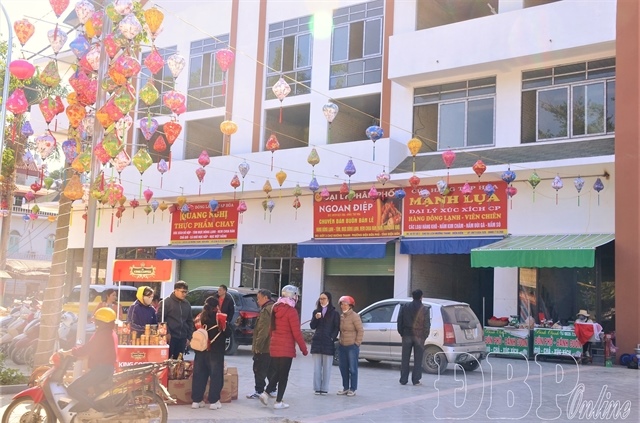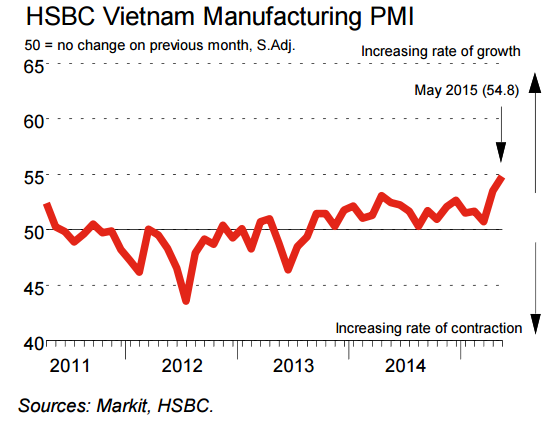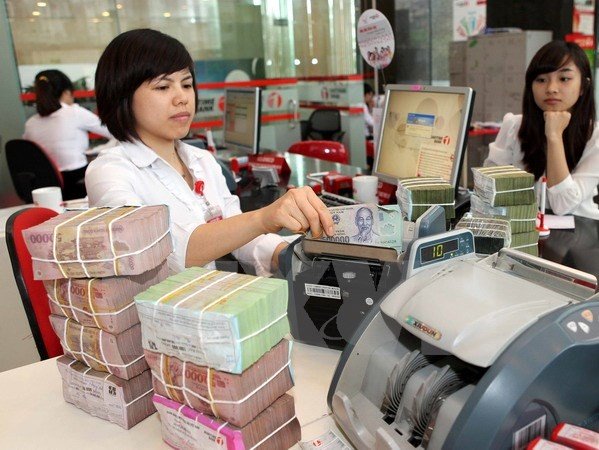Trade deficit reaches $3 billion
Trade deficit reaches $3 billion
The total merchandise export turnover was recorded at US$63.2 billion in the first five months of this year, an increase of 7.3 per cent over last year's figure.

Meanwhile, the total import turnover reached $66.2 billion, recording an increase of 15.8 per cent from last year.
The FDI sector was overwhelmed by import-export activities, according to the General Statistic Office (GSO). The export surplus of the FDI sector kept the nation's trade deficit at $3 billion.
The FDI sector exported $44.4 billion in the first five months, increasing by 12 per cent, and imported $39.7 billion, rising by 23.2 per cent, to make a trade surplus of $4.7 billion.
The domestic sector exported $18.8 billion, nearly a half of the FDI sector, and imported $26.5 billion turnover, making a trade deficit of $7.7 billion.
According to GSO, the export products that have large values and high growth rate belonged to the FDI sector.
Telephones and components exported $11.8 billion, increasing by 18.5 per cent; electronic products, computers and spare parts exported $6 billion, increasing by 59.7 per cent, while footwear exported $4.6 billion, increasing by 19.5 per cent.
Some agricultural products in the domestic sector recorded fairly high growth rates: cashew nuts earning $817 million and increasing 25.6 per cent; cassava and its products earning $740 million, increasing by 47.5 per cent.
GSO economic experts expressed their concerns about the export of some key products in the domestic sector, including agricultural and seafood products.
These two key export products declined in export turnover in the first five months due to harsh competiveness in price and quality, said economic experts.
Minister of Industry and Trade Vu Huy Hoang told Tin Tuc (News) newspaper that the country should focus on the sectors of garment and textile, footwear, and electronics.
In the agriculture sector, the minister suggested to seek markets for rice and seafood exports.
Relevant ministries have made efforts to negotiate with other governments through government rice contracts, as well as by creating conditions for enterprises to negotiate with foreign private enterprises through commercial contracts, added the minister.
He noted that these efforts had given results, especially with the Philippines, Malaysia, and some other markets.
Talking about seafood exports, the minister expressed his hope that a free trade agreement (FTA) with South Korea would take effect in the last six months of this year.
Under the FTA, seafood products exported to their market will be taxed 0 per cent.
Earlier, ASEAN countries could export only 5,000 tonnes of shrimp a year to the Korean market, of that Viet Nam exported some 2,500 tonnes, Hoang remarked, adding that once the FTA takes effect, Viet Nam will be able to export up to 10,000 tonnes in the first year and the volume will increase by 1,000 tonnes in following years, which will offer large opportunities for Vietnamese seafood exporters.
While the seafood export turnover reached $2.44 billion during the period, falling by 12.1 per cent, revenue from coffee was $1.19 billion, exporting 577,000 tonnes, down 39.6 per cent in volume and 38.2 per cent in turnover. Tea exports reached 43,000 tonnes, hitting $70 million, down 2.5 per cent in volume and 0.6 per cent in turnover, while rice exports was 2.5 million tonnes, hitting $1.98 billion, down 7.4 per cent in volume and 10.7 per cent in turnover. Crude oil exported 3.58 million tonnes, earning $1.54 billion, decreasing 5.5 per cent in volume and 53.3 per cent in turnover.
The import products that had high values and created the $3 billion trade deficit were raw materials and fuels and materials, which served production activities, mainly processing and assembling for exports in the FDI sector.
China continues to be the largest exporter to Viet Nam, with $19.5 billion in the first five months, increasing 19.1 per cent. However, the Chinese market imported only $6.1 billion from Viet Nam, becoming the country that has the largest bilateral trade deficit with Viet Nam, with $13.4 billion.
China has long been Viet Nam's leading trade and investment partner. The transport fee to China is also much lower than to other countries, and vice versa, said the minister.
To reduce the country's dependence on one market, the minister suggested the diversification of export markets by signing trade agreements, increasing domestic production, developing substitute industry for importi products, as well as fighting smuggling through border gates.





















